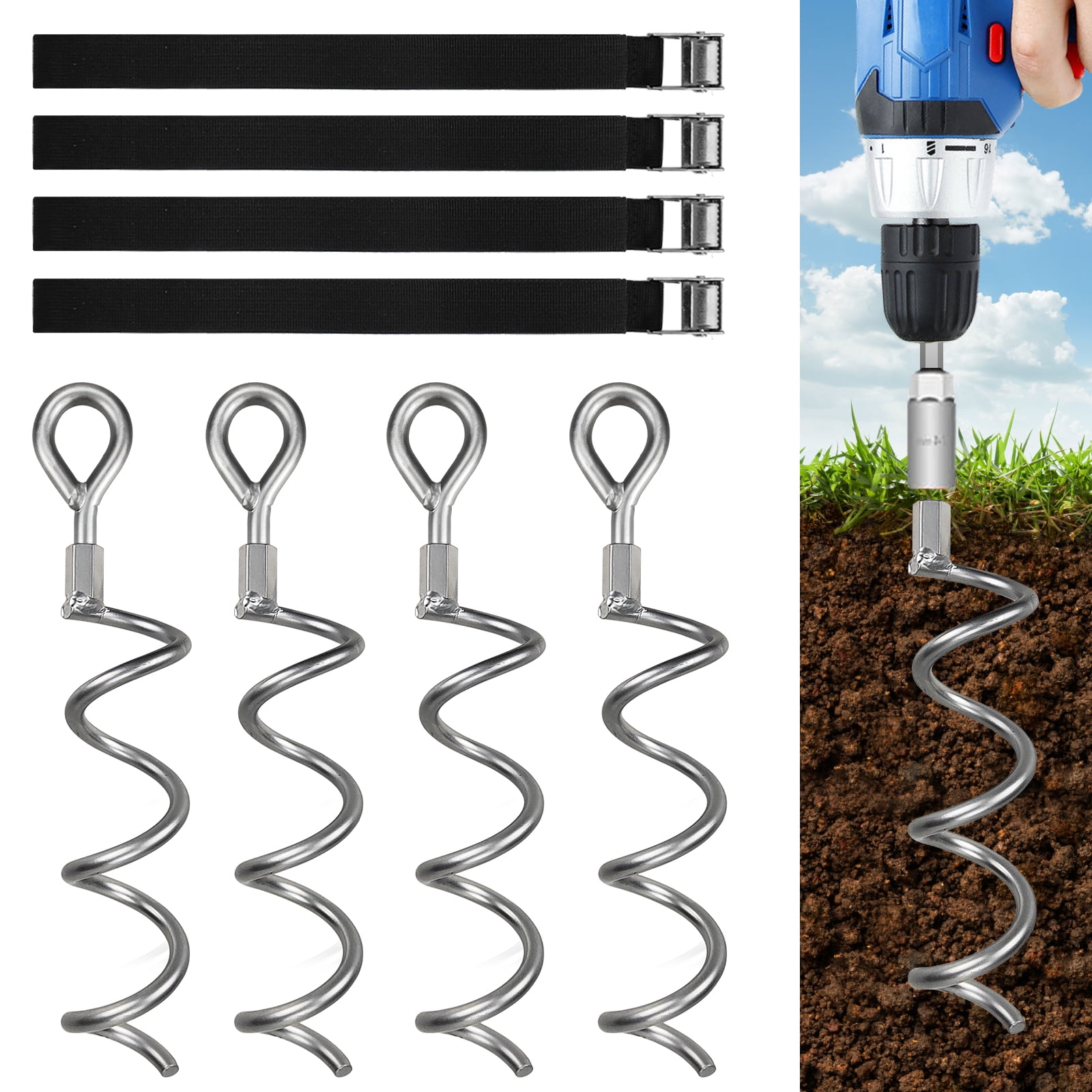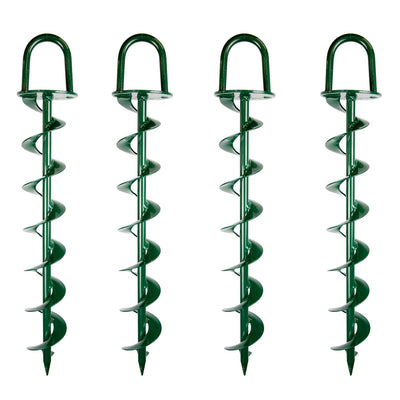An Expert’s Guide to Selecting the Most Reliable Ground Anchor Solution
An Expert’s Guide to Selecting the Most Reliable Ground Anchor Solution
Blog Article
Discover the Different Kinds Of Ground Anchor for Your Next Project
From auger anchors, which stand out in varied soil conditions, to stake anchors designed for short-term installments, the options are various. Additionally, concrete and screw supports existing distinct benefits in details circumstances, while deadman supports are customized for applications requiring resistance to side forces.

Auger Anchors
Auger supports are a prominent option in various building and construction and landscape design tasks because of their unique layout and effective securing capabilities. These supports contain a helical screw-like shaft that is driven into the ground, permitting a steady and safe and secure hold. The spiral style facilitates simple installation and optimizes resistance versus side pressures, making auger anchors specifically reliable in applications such as secure fencing, short-lived structures, and disintegration control.
The installation process of auger supports is fairly simple. Auger anchors can be conveniently removed and reused, which adds to their cost-effectiveness and sustainability.
One of the considerable advantages of auger supports is their ability to disperse lots equally across the bordering soil, decreasing the threat of dirt disturbance and lessening environmental influence. In addition, they are much less vulnerable to heaving or loosening up gradually contrasted to standard anchoring methods. Consequently, auger anchors are an outstanding selection for jobs calling for reliable and long lasting anchoring remedies.

Risk Anchors
When it comes to safeguarding structures in a range of outside applications, risk anchors offer a simple and trusted solution. These supports are typically built from long lasting products such as steel or aluminum, designed to stand up to environmental stresses while offering optimal stability. Their simple style enables fast setup, making them an ideal selection for temporary or permanent anchoring needs.
Stake anchors are specifically beneficial in safeguarding tents, canopies, and other lightweight structures against wind and weather. They work by being driven into the ground at an angle, developing a solid hold that withstands pull-out forces - Ground Anchor. The effectiveness of stake supports relies on several aspects, including soil type, dampness web content, and the angle of installation
For added protection, several stake anchors include attachment points for ropes or straps, permitting tension adjustments as essential. In applications such as landscape design or building and construction, they can successfully support devices or structures on uneven terrain. Overall, risk anchors give a versatile and cost-effective service for safeguarding numerous outdoor installments, making them a preferred option for contractors and DIY enthusiasts alike.
Concrete Anchors
Concrete anchors give a durable option for safeguarding frameworks to concrete surfaces, making certain security and security in numerous applications. These anchors are important for jobs ranging from household constructions to massive industrial installations. They can be found in different types, including growth anchors, sticky supports, and undercut anchors, each made for specific load needs and environmental conditions.
Adhesive supports utilize high-strength epoxy or resin to bond the support to the concrete, providing superior load-bearing abilities, particularly in cracked concrete circumstances. Undercut anchors create an one-of-a-kind shape within the concrete, giving outstanding holding power, especially in applications where tensile loads are prevalent.
Selecting the ideal concrete anchor entails taking into consideration aspects such as the weight of the lots, the problem of the concrete, and environmental conditions. Appropriate installation techniques are critical to make sure ideal efficiency and reliability. When implemented properly, concrete anchors considerably boost the architectural integrity of various jobs, making them important in modern building techniques. Comprehending the details needs of your task will certainly assist in choosing the ideal kind of concrete support for the task.
Screw Anchors

Screw anchors are a versatile fastening solution that can be effectively employed in a selection of applications where conventional concrete anchors may not suffice. These anchors contain a helical design that permits them to be conveniently driven right into the ground, making them excellent for usage in dirt and other substrates. Their special framework gives excellent holding power and resistance to pull-out forces, making them appropriate for numerous projects, from landscaping to structural assistance.
Among the main benefits of screw anchors is their ease of installment. They call for minimal tools and can often be set up without the need for excavation, which conserves both time and labor expenses. In addition, screw anchors can be removed and recycled, offering a sustainable service for short-lived applications.
Screw supports are particularly beneficial in locations where soil conditions are testing, such as loose or sandy dirts. Their ability to be installed at i loved this differing midsts allows for modification based on specific job demands. In general, screw anchors give a reputable and reliable securing approach, making them a superb selection for specialists and engineers looking for reliable solutions for their projects.
Deadman Anchors
Deadman supports offer as a robust option for maintaining structures in challenging conditions, particularly where conventional securing methods may drop brief. These supports consist of large, hefty things hidden underground, which develop resistance versus side forces. The style typically includes a horizontal component, such as a block of concrete or a metal plate, buried in the dirt, to which cable televisions or bands are connected.
The efficiency of deadman supports lies in their ability to disperse loads over a larger area, reducing the danger of failure in unstable dirt conditions. They are particularly helpful in applications such as maintaining wall surfaces, short-term frameworks, and incline stablizing, where dirt motion can compromise the stability of the structure.
Installation of deadman anchors requires cautious preparation to ensure they are put at the appropriate deepness and positioning, maximizing their load-bearing capacity. While they may call for even more labor and material than lightweight anchors, this content their dependability in negative problems makes them very useful for long-lasting jobs. Additionally, deadman supports are versatile and can be adapted to various applications, making them a go-to choice for engineers encountering special obstacles in their projects.
Conclusion
In recap, selecting the proper sort of ground support is important for making certain security and protection in different tasks. Auger anchors master varied dirt problems, while stake anchors fit short-lived applications. For concrete surface areas, growth and sticky anchors offer trustworthy choices, and screw anchors use adaptability in tough terrains. Deadman supports are particularly reliable in withstanding lateral pressures for keeping wall surfaces. Cautious factor to consider of these options will certainly enhance task outcomes and architectural honesty.
In addition, concrete and screw anchors present one-of-a-kind benefits in certain scenarios, while deadman anchors are customized for applications requiring resistance to lateral pressures - Ground Anchor.Auger supports are a preferred selection in different construction and landscaping jobs due you could check here to their unique design and effective anchoring abilities. They come in various kinds, including growth supports, glue supports, and undercut supports, each made for particular tons requirements and environmental conditions
Glue anchors utilize high-strength epoxy or resin to bond the support to the concrete, using exceptional load-bearing capabilities, specifically in fractured concrete situations. Generally, screw anchors give a effective and trustworthy anchoring technique, making them a superb option for designers and specialists seeking reliable solutions for their jobs.
Report this page